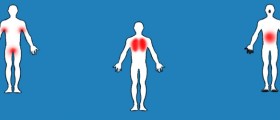
Brucellosis is an infectious illness which is transmitted from animals to humans. The way of transmission commonly includes contaminated food such as unpasteurized milk, cheese and other dairy products. Apart from indirect transmission, brucellosis can be spread directly via contact with the infected animal. Even spread of the bacteria through the air is possible.
This infectious disease does not occur frequently in the United States. However, it is rather common in other countries of the world.
Clinical Characteristics of Brucellosis
Incubation period after contracting the infection and until the first symptoms start to show may last from a few days to several months. The disease starts with fever and chills, sweats, weakness, joint, muscle and back pain and intensive headache.
The most serious problem regarding brucellosis is that symptoms and signs of the infection may repeatedly come and go. This carries risk of disease becoming chronic (symptoms linger for years). In this case patients generally suffer from fatigue, repeated fevers, arthritis and spondylitis.
Potential ComplicationsBrucellosis is a disease that can cause damage to different organs and organ systems.
For example, it can induce endocarditis. Endocarditis (inflammation of the inner lining of the heart) is definitely the most serious complication of this infection. It can subsequently lead to damage to the heart valves and interfere in functioning of the heart.
Arthritis is another serious complication of brucellosis. The infection can affect different joints such as the knees, ankles, hips and spine.
In men brucellosis may cause epididymo-orchitis, inflammation of the testicles and epididymitis. From there infective agents may spread even further to the prostate or the kidneys.
And finally, in some people brucellosis may cause inflammation of the meninges (meningitis) as well as inflammation of the brain tissue (encephalitis).Prevention
With proper measures brucellosis can be prevented. It is essential to avoid unpasteurized dairy foods. The infection can be easily contracted by consuming raw dairy products particularly from domestic herds.
Furthermore, meat is supposed to be cooked thoroughly because consuming undercooked meat may be another potential way of introducing the bacterium into the body. Meat is well cooked when the internal temperature reaches 145-165 F. This is a great measure of prevention not only for brucellosis but also for other bacteria such as salmonella and Escherichia coli.
People who are at professional risk to contract the infection (veterinarians, farmers, hunters, slaughterhouse workers etc.) are due to wear protective rubber gloves and similar gear particularly when handling dead animals or assisting in an animal birth giving.
It is also important to take safety precautions in high-risk workplaces such as laboratories and similar facilities.
And finally, by vaccinating domestic animals it is possible to provide with proper protection of livestock herds against brucellosis.

















Your thoughts on this
Loading...